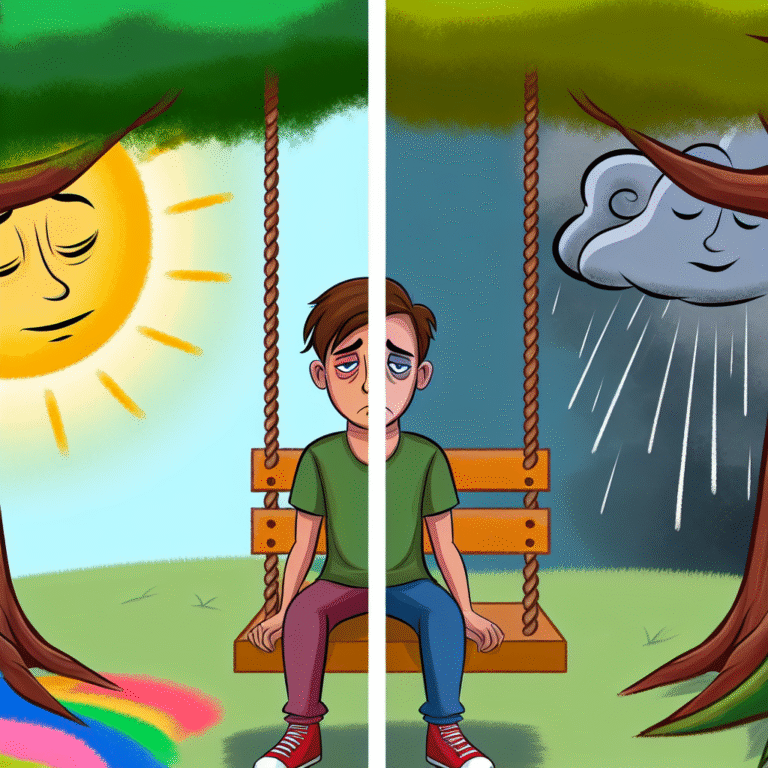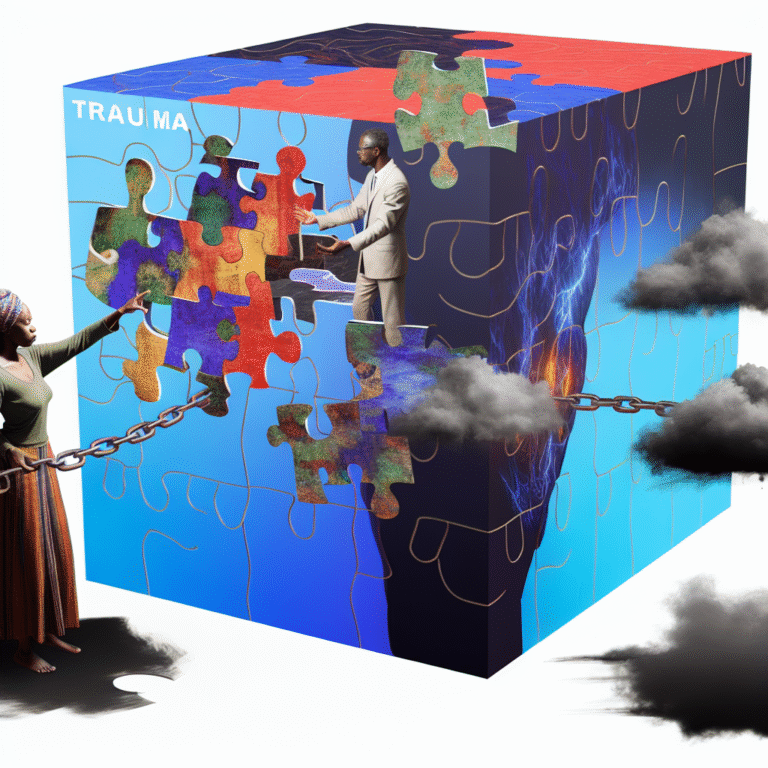
From Mood Swings to Diagnosis: Identifying Bipolar Disorder in Adolescents – The Essential Guide
Introduction
Adolescence is often characterized by a whirlwind of emotions, shifting identities, and the beginnings of adult responsibilities. However, these mood swings can sometimes mask a deeper issue — bipolar disorder. Understanding how to differentiate between typical teenage behavior and the symptoms of this mental health condition is crucial for early diagnosis and effective treatment. In this article, we will navigate the complexities of identifying bipolar disorder in adolescents, transforming your knowledge from mood swings to diagnosis.
Understanding Bipolar Disorder
What is Bipolar Disorder?
Bipolar disorder is a mental health condition marked by extreme mood changes, including emotional highs (mania or hypomania) and lows (depression). These fluctuations can significantly impact an adolescent’s functioning in daily life. The unpredictability of these episodes can often lead to confusion, not only for the individual but also for their friends and family.
Types of Bipolar Disorder
Bipolar I Disorder: Characterized by manic episodes lasting at least seven days, or by manic symptoms that are so severe they require immediate hospital care. Depressive episodes also occur, typically lasting at least two weeks.
Bipolar II Disorder: Defined by a pattern of depressive episodes and hypomanic episodes, but not the full-blown manic episodes found in Bipolar I.
- Cyclothymic Disorder (Cyclothymia): This form involves periods of hypomanic symptoms and periods of depressive symptoms lasting for at least two years (one year in children and adolescents); however, the symptoms do not meet the diagnostic requirements for a hypomanic episode and a depressive episode.
Understanding these different types is essential for correctly identifying bipolar disorder in adolescents.
Identifying Bipolar Disorder in Adolescents
Recognizing Symptoms
Identifying bipolar disorder can be challenging, especially in adolescents, where mood swings are a normal part of development. However, certain symptoms stand out:
Manic Symptoms:
- Increased energy or activity
- Racing thoughts
- Difficulty sleeping
- Grandiosity
- Increased risk-taking behavior
- Depressive Symptoms:
- Feelings of sadness or hopelessness
- Irritability
- Changes in sleep patterns
- Withdrawal from friends and activities
- Fatigue or loss of energy
Case Study
Emma, a 15-year-old high school student, experienced severe mood fluctuations. Some days, she would feel on top of the world and engage in risky behaviors, like skipping school for spontaneous road trips with friends. Other days, she would isolate herself, struggling to get out of bed. After extensive evaluation, Emma’s doctor diagnosed her with Bipolar II disorder.
Analysis: Emma’s case highlights the importance of recognizing both sides of bipolar disorder. While her manic episodes may initially appear as typical teenage excitement, the contrast with her depressive episodes shows the depth of the disorder.
Age and Gender Considerations
Research shows that bipolar disorder often emerges in late adolescence or early adulthood. Boys tend to experience manic episodes more frequently, while girls might exhibit depressive symptoms more prominently. It’s vital for both parents and educators to consider these gender differences when observing behaviors.
Diagnostic Tools and Techniques
Structured Interviews and Assessments
Professionals utilize various structured interviews and assessment tools to diagnose bipolar disorder:
- The Young Mania Rating Scale (YMRS): Measures manic symptoms.
- The Mood Disorder Questionnaire (MDQ): Helps identify possible bipolar symptoms.
These assessments provide a systematic approach to evaluating the adolescent’s mental health.
Clinical Evaluations
In addition to interviews, a thorough clinical evaluation should include:
- A comprehensive history of mood changes
- Family history of mood disorders
- Current stressors in the adolescent’s life
- Any substance abuse issues
The Importance of Early Diagnosis
Early diagnosis can empower families and individuals to manage symptoms effectively, leading to better outcomes. If left untreated, bipolar disorder can lead to academic failure, substance abuse, and relationship difficulties.
Management and Treatment Options
Psychotherapy
Cognitive Behavioral Therapy (CBT): This form of therapy helps adolescents understand and change their thought patterns and behaviors.
Family Therapy: Involves family members in the treatment process to improve communication and support.
Medication
Mood stabilizers, antipsychotics, and antidepressants may be prescribed, though it’s crucial to carefully monitor any medication, as some can exacerbate manic symptoms.
Lifestyle Changes
Promoting a healthy lifestyle can support treatment:
- Regular Exercise: Helps stabilize mood and boost energy.
- Healthy Sleep Patterns: Essential for emotional regulation.
- Balanced Diet: Can impact mood stability.
Real-World Applications of Diagnosis
Adolescent mental health awareness is growing, leading to schools and communities developing programs aimed at early identification of mood disorders.
Case Study
James, 14 years old, struggled with his grades and relationships. After showing up at school with erratic behavior and being noticed by his teachers, who effectively communicated their concerns with his parents, they sought professional help. With thorough evaluation, James was diagnosed with bipolar I disorder, allowing for immediate intervention.
Analysis: James’s situation underscores the role of educational environments in identifying mental health issues early. Collaboration among educators, parents, and mental health professionals is essential for effective intervention.
Challenges in Identification
Identifying bipolar disorder in adolescents can be complex due to:
- Stigma: Many may fear the social repercussions of a mental health diagnosis.
- Misdiagnosis: Symptoms may mimic other disorders, such as ADHD or depression.
- Lack of Awareness: Parents and even some healthcare providers may not be well-versed in adolescent bipolar disorder.
Moving from Mood Swings to Diagnosis
For parents and guardians, it’s essential to differentiate between typical teenage angst and potential symptoms of bipolar disorder.
Practical Steps for Parents
- Educate Yourself: Understanding mood disorders helps you identify symptoms more effectively.
- Maintain Open Communication: Regular, honest discussions with your adolescent can help spot changes in behavior early.
- Consult Health Professionals: If you have concerns, seeking a mental health evaluation can provide clarity.
Conclusion
As we navigate the path from mood swings to diagnosis, it becomes clear that understanding bipolar disorder is a journey requiring awareness, education, and empathy. By prioritizing mental health, we can ensure that adolescents receive the support they need to thrive. Remember, recognizing the signs early can lead to timely intervention and improved outcomes.
FAQs
1. What is the age range in which bipolar disorder typically presents?
Bipolar disorder usually emerges in late adolescence or early adulthood, although symptoms can appear earlier.
2. How can I differentiate between normal teenage moodiness and bipolar disorder?
Look for extreme mood swings that last longer than typical teenage angst, affect daily functioning, and involve changes in energy levels and behavior.
3. Can bipolar disorder be diagnosed in children?
Yes, although diagnosing bipolar disorder in children can be more complex due to overlapping symptoms with other disorders.
4. What treatment options are available for adolescents with bipolar disorder?
Treatment often includes a combination of psychotherapy, medication, and lifestyle changes.
5. How can family members support an adolescent with bipolar disorder?
Support can be offered through open communication, involvement in therapy sessions, and education about the disorder to create a safe and understanding environment.
By following this guide, readers can gain valuable insights into identifying and supporting adolescents with bipolar disorder, turning uncertainty into informed action.















